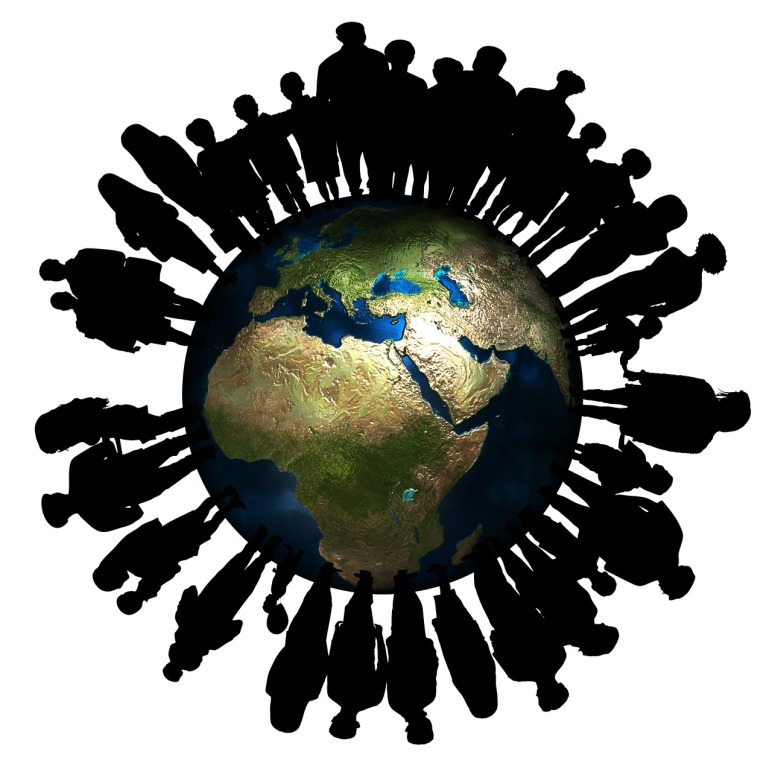One of the main concerns that people have when there is a discussion about radical longevity enhancement is that if people stop dying of old age, population is going to explode and cause a major overpopulation problem. I believe this fear to be unfounded, for many reasons. First, it would certainly be important to define what overpopulation actually is. Overpopulation could be defined as the moment in a population growth where the productivity of the environment can no longer sustain the population growth. In fruit flies or other simple being in a closed, controlled environment, it is typically shown that population will grow exponentially until there is no more resources available, at which point the population drops dramatically as every member starves to death. It is obvious that we wouldn’t want to see such a scenario happen to human civilizations, which would seem to indicate that a warning against overpopulation might be wise. After all, there has been a faster than exponential growth of human population since the industrial revolution. Are we doomed to death by starvation?
First and foremost, contrary to fruit flies in a glass box filled with sugar, our food sources are renewable. Not only are they renewable, but the productivity has been growing over the years, and will probably keep doing so as technologies allow us to generate food in a more sustainable way than they do right now. Non-renewable resources, such as gas, oil and minerals might become more of a problem in the future if the population keeps growing, especially if we don’t find a way to use them more sparingly or to find renewable alternatives.
However, I don’t believe that the populations will keep growing at the kind of rates we have been seeing in the last decades. Especially if there is going to radical longevity enhancements.
I believe it won’t be a problem because of trend that has already been observed among developed countries, which is called the demographic transition theory. It has been around for a while and so far its predictions have been following reality relatively closely. Basically, populations can be described in three categories: Those with high deaths rate and high birth rates, those whose death rates have lowered but have kept high birth rates and finally populations with low birth rates and low death rates. The first group is characteristic of pre-modern societies, where childhood mortality is still very high and people don’t generally have access to modern hygiene and medical technology. The second group generally includes the developing countries where the death rates are lowering as a result of better access to the different technologies, but where birth rate is still very low. The final group, which includes pretty much includes every modern westernized countries are populations the lowest death rates as a result of their very high standards of living, but that are also having less children than any other population.
The explanations for the lower birth rates are numerous. As people live with better conditions, it becomes much easier to become individualists and having a big family no longer is a priority, since it effectively become possible for an individual to take care of themselves on their own. Easier access to contraception is also characteristic of these societies, and they are generally viewed as a positive measure for someone to take in their lives. People have other priorities than having children and getting married to have a family is no longer the main goal of many people. There is also a rise in the numbers of same-sex couples or couples who chose not to have children and it is less and less seen as something that is stigmatized.
Furthermore, if longevity enhancement were to become more popular, I believe the desire to have children would decline even more. For what would the point be in having children if you know for a fact that, a hundred years from now, you would be just as likely as any of your children to still be alive and active in society? Surely some people would still want to have a child or two, but I don’t believe that this would be a problem at all. After all, longevity enhancement through the medical treatment against degenerative aging would certainly help us to live longer, but it wouldn’t grant us immortality. People would still die from car accidents, rare sickness and whatever else that wouldn’t be covered by the longevity treatments. Therefore, I honestly don’t think overpopulation in civilisations that have access to better lifespans would be a problem. We would simply have a lot less children than we do today.
That being said, I don’t have a crystal ball that can predict the future with certainty. Maybe there will be overpopulation problems to deal with if longevity technologies were to become a thing. However, from an ethical point of view, I believe it would be morally wrong to let billions of people die from degenerative aging simply because we couldn’t be sure that keeping them from dying wouldn’t bring about some challenge we would have to overcome as a society.
Sources:
Kasun, J. (1989). Too many people? The myth of excess population. Economic Affairs, 9(5), 15-18.
Cutas, D. E. (2008). Life extension, overpopulation and the right to life: against lethal ethics. Journal of medical ethics, 34(9), e7-e7.
Kirk, D. (1996). Demographic transition theory. Population studies, 50(3), 361-387.

